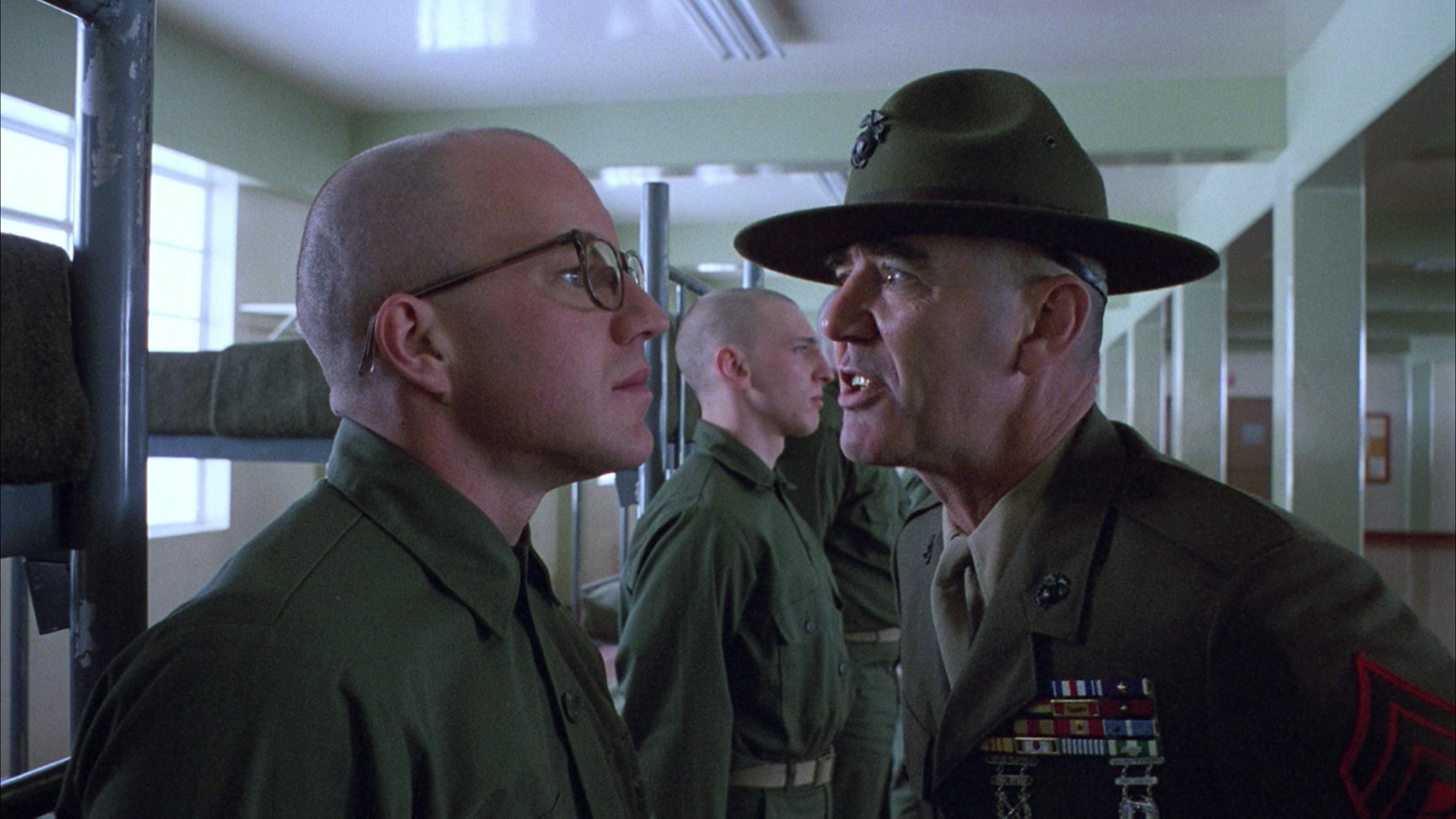
Fact: Stanley Kubrick’s Full Metal Jacket was notorious for using unconventional methods to elicit genuine emotions from his actors. For instance, in the scene where Private Pyle is hazed by his fellow recruits, Kubrick didn’t inform Vincent D’Onofrio about the extent of the physical aggression, leading to authentic reactions of surprise and distress.
Stanley Kubrick, the legendary filmmaker, was renowned for his meticulous approach to filmmaking and his pursuit of authentic performances from his actors. “Full Metal Jacket,” Kubrick’s harrowing war film set during the Vietnam War, is a prime example of his unique tactics to elicit genuine emotion from the cast. Through his unconventional methods, Kubrick pushed the boundaries of traditional filmmaking, challenging his actors to deliver raw and powerful performances that left a lasting impact on both the film and themselves.
One of the most infamous aspects of “Full Metal Jacket” was the intense boot camp scenes that portray the brutal training of Marine recruits. To create an authentic atmosphere, Kubrick had the actors playing the recruits undergo actual military training with Marine Corps drill instructors. This decision proved to be transformative as the actors found themselves thrust into a world of real fear and anxiety.
The drill instructors were given the freedom to treat the actors as if they were actual Marine recruits, pushing them to their limits both physically and mentally. The result was a cast that genuinely experienced the struggles and emotions of their characters, enhancing the film’s realism and intensity.
Kubrick was known for his reluctance to rehearse scenes, preferring to capture spontaneous and natural performances. In the boot camp scenes, this approach was taken to the extreme. For instance, during the scene where Private Pyle (played by Vincent D’Onofrio) is hazed by his fellow recruits, Vincent D’Onofrio Full Metal Jacket emotions was not informed about the extent of the physical aggression that would take place. As a result, his shock and distress in the scene were entirely genuine, adding an extra layer of authenticity to the film.
Another striking example of Kubrick’s tactics can be seen in the character of Gunnery Sergeant Hartman, played by R. Lee Ermey. Initially hired as a technical advisor for the film, Ermey’s knowledge and background as a former Marine drill instructor were instrumental in shaping the authenticity of the boot camp scenes.
However, it was Ermey’s impressive and completely improvised performance during the boot camp scenes that earned him the role of Sergeant Hartman. Kubrick recognized the power of Ermey’s unscripted lines and allowed him to take the character in new and unexpected directions. The result was one of the most memorable and iconic performances in film history, cementing Ermey’s status as a legendary character actor.
Stanley Kubrick elicit emotion Full Metal Jacket tactics pushed the actors to their limits, both physically and emotionally. Charlize Theron, who portrayed Aileen Wuornos in “Monster” and underwent a similar physical transformation, spoke of how she needed to fully immerse herself in the character to understand their emotions. In “Full Metal Jacket,” the actors were constantly kept on edge, never knowing what surprises Kubrick had in store for them. This environment of uncertainty and intensity led to performances that felt genuine and raw, capturing the essence of the characters they portrayed.
“Full Metal Jacket” remains a powerful and unforgettable war film that continues to be praised for its realism and its impact on its audiences. Stanley Kubrick’s unorthodox methods and relentless pursuit of authenticity left an indelible mark on the film and on the actors involved. The dedication and commitment required from the cast to endure Kubrick’s tactics resulted in performances that transcended traditional acting, leaving behind a legacy of a film that remains a testament to the power of unconventional filmmaking.
References:
Pelan, T. (2020, June 16). Run Through the Jungian: Stanley Kubrick’s “Full Metal Jacket”, a Phenomenological Treatise on War • Cinephilia & Beyond. Cinephilia & Beyond. https://cinephiliabeyond.org/full-metal-jacket/
Wise, D. (2017, August). How we made Stanley Kubrick’s Full Metal Jacket. The Guardian; The Guardian. https://www.theguardian.com/culture/2017/aug/01/how-we-made-full-metal-jacket-stanley-kubrick-matthew-modine
Marks, B. (2017, August 20). 30 Years Later: “Full Metal Jacket” – Stanley Kubrick’s Misunderstood Masterpiece. Tilt Magazine. https://tilt.goombastomp.com/film/full-metal-jacket-misunderstood-masterpiece-30/
Fact: In 2023, actor Jeremy Renner was involved in a snowplow accident while trying to…
Fact: Temple Grandin's 'Thinking in Pictures' comes from analogy of her method of seeing…
Fact: Seinfeld's Soup Nazi was inspired by a real New York City legend, Al Yeganeh,…
Fact: Judith Barsi, the actress that did the voiceover for Ducky in the 1988 film,…
Fact: The meeting of Oppenheimer and Einstein scene in the Christopher Nolan film, Oppenheimer,…
Fact: Jeremy Allen White went to culinary school for "The Bear" TV show to bring…